On my journey to understand how to keep our minds sharp, I’ve been amazed by “neural resilience.” This is the brain’s power to stay strong against the challenges that come with getting older. We must recognize and grow this resilience as we face threats like Alzheimer’s disease (AD). A thorough review of 54 studies shone a light on how some brains defend themselves1. These studies found that people with higher resilience had a smaller chance of getting dementia, showing a clear link1.
Looking deeper into the research, I found exciting findings. The National Institute on Aging-Alzheimer’s Association’s guidelines helped understand AD’s early stages2. Research like Morris et al.’s shows even normal aging brings changes in the brain, hinting that cognitive problems don’t start with obvious disease signs2. This tells us how important activities and certain traits are for brain strength, even when facing AD2.
Key Takeaways
- Neural resilience is key to maintaining cognition despite age-related decline.
- Statistical analysis demonstrates a significant link between resilience and reduced dementia risk1.
- Lifelong habits and genetics play a role in fortifying our cognitive defenses2.
- Understanding the early biomarkers of AD can shed light on preemptive resilience strategies2.
- Gender disparities in cognitive reserve hint at sex-specific resilience tactics2.
- Residual methods serve as a lens to observe variance in cognitive aging processes1.
Understanding the Brain’s Ability to Withstand Aging
In understanding how we can keep our minds sharp as we age, we look at genetics, our surroundings, and how we behave. These elements work together to protect against the usual mental declines of aging. Exploring how the brain combats aging offers insights into keeping our mental sharpness.
The Role of Genetic and Environmental Factors
Our genes and everyday environment deeply impact how well our brain ages. For instance, certain genes can make us more likely to experience brain changes as we grow older, including Alzheimer’s. At the same time, our living conditions, pollution exposure, and healthcare access can either help or harm our brain health. Studies indicate that even those with a high genetic risk for Alzheimer’s can protect their brain by living in enriching environments.
Behavioral and Lifestyle Contributions to Cognitive Longevity
What we do and how we live play big roles in our brain health. Being active mentally, having lots of friends, and exercising regularly build a strong cognitive base. Research tells us that living a healthy lifestyle can cut the risk of Alzheimer’s by as much as 60%. That’s compared to people who don’t follow these healthy habits3. Plus, folks who live healthily tend to experience slower brain aging3.
Looking at the brain’s fight against getting older shows us something important. Our genes, the environment, and how we behave all come together to shape our mental aging. None of these factors act alone. They all mix together to either strengthen our mental skills or make them weaker as we age.
Key Concepts in Cognitive Aging: Resistance and Resilience
In the journey through cognitive aging, resistance and resilience are crucial. They help us battle Alzheimer’s and other cognitive illnesses. Resistance lets the brain keep its structure and function, even when facing disease. Meanwhile, resilience is the brain’s power to stay sharp after damage or decline. Knowing how these work is key in aging studies.
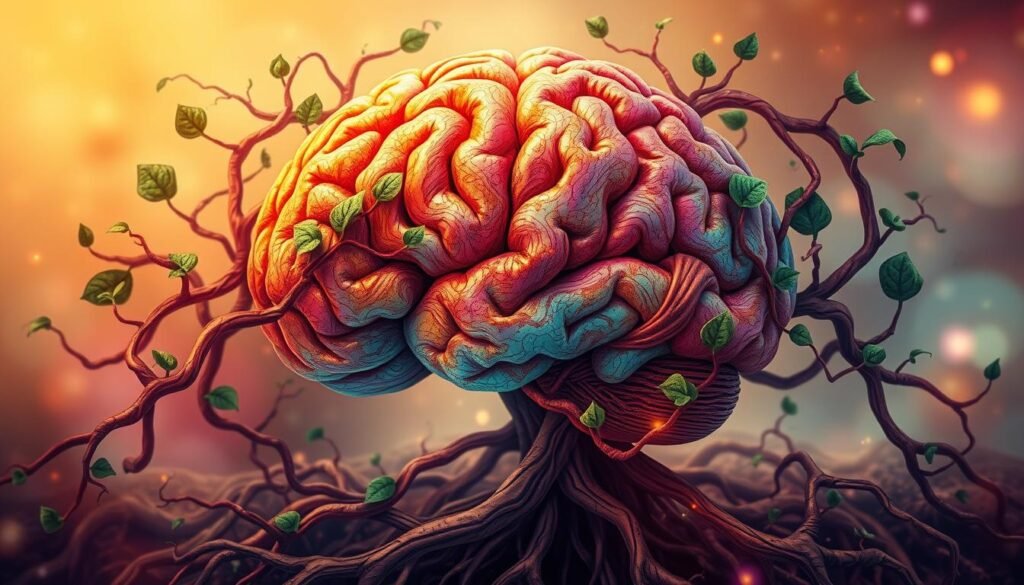
Studies have greatly improved what we know about cognitive reserve and maintenance. The Collaboratory on Research Definitions for Reserve’s research is a good example. It reveals how education, mental activities, and socializing boost resilience. This changes how brain disease impacts cognitive decline4.
| Factor | Role in Resilience | Impact on Cognitive Aging |
|---|---|---|
| Education | Builds cognitive reserve | Delays memory decline in dementia cases5 |
| Social Connectivity | Enhances brain maintenance | Linked to lower rates of dementia5 |
| Physical Activity | Improves neural plasticity | Reduces cognitive decline severity4 |
Understanding these ideas helps in real life, not just in studies. They shape how doctors and wellness experts work to fight cognitive aging. Using these ideas, we can greatly better the lives and mental health of the elderly.
In the end, it’s not just about living longer. It’s about making those years fuller by keeping our minds sharp. This lets elders enjoy life fully, even with Alzheimer’s and other issues. With more research, we aim to make aging a better, brighter time for everyone.
The Importance of Cognitive Reserve in Aging
The idea of cognitive reserve has changed how we see the brain dealing with aging and diseases that affect the mind. This reserve works like a shield. It helps slow down the appearance of symptoms in illnesses like Alzheimer’s disease.
Factors Contributing to Brain Reserve
Brain reserve is different from cognitive reserve. It’s about the brain’s structural strength—how many neurons it has, its connections, and overall size. Research has found that people with more education or challenging jobs have denser connections in their brains. This density supports thinking skills as we get older6.
Education over one’s life, along with ongoing mental activities, adds a lot to brain reserve. This addition strengthens the brain’s defense system. For example, doing complex tasks at work or having hobbies that make you think can keep your mind sharp7.
How Lifelong Learning Impacts Neural Resilience
Learning all through life isn’t just rewarding. It’s a key way to fight off mental decline. Keeping your brain active by learning new things makes it stronger. And this strength builds up a good cognitive reserve. This ongoing learning lowers the chance of getting dementia and other brain-aging diseases67.
For more on cognitive and brain reserves, check out how a growth mindset helps the brain at this site.
| Activity Type | Contribution to Cognitive Reserve | Impact on Neural Resilience |
|---|---|---|
| Intellectual Activities | High | Significant |
| Occupational Complexity | Moderate to High | Moderate to Significant |
| Leisure Activities | Moderate | Moderate |
Knowing about these elements helps us keep our minds healthy for longer. It also guides societies in making plans. Such plans should encourage lifelong learning and keeping the brain active.
Residual Methods: Gauging Individual Resistance to Cognitive Decline
The study of how people resist cognitive decline has changed our view on aging. It uses regression analysis to show the difference between expected and real cognitive abilities.
This method calculates residuals, the gap between expected and observed cognitive performance. It points out how some people stay mentally sharp, useful for research and care.1
A recent study showed that high residual scores mean better cognitive function, even with brain issues2. However, the complex stats and interpretation make it a challenge.1
| Factor | Impact on Cognitive Resilience |
|---|---|
| Regression of cognition on adverse factors | Assesses resilience amid neurodegenerative disorders |
| Correlation of residual scores with cognition | High correlation suggests strong cognitive maintenance despite pathology2 |
| Advisory on using residuals | Requires careful statistical interpretation and application1 |
To improve this method, we use both cognitive measures and residuals. This helps us understand the relationship between brain health and mental function, making predictions more accurate1
The complex nature of these analyses might be hard to apply in day-to-day care. But, they are key to creating better support for maintaining a healthy mind.2
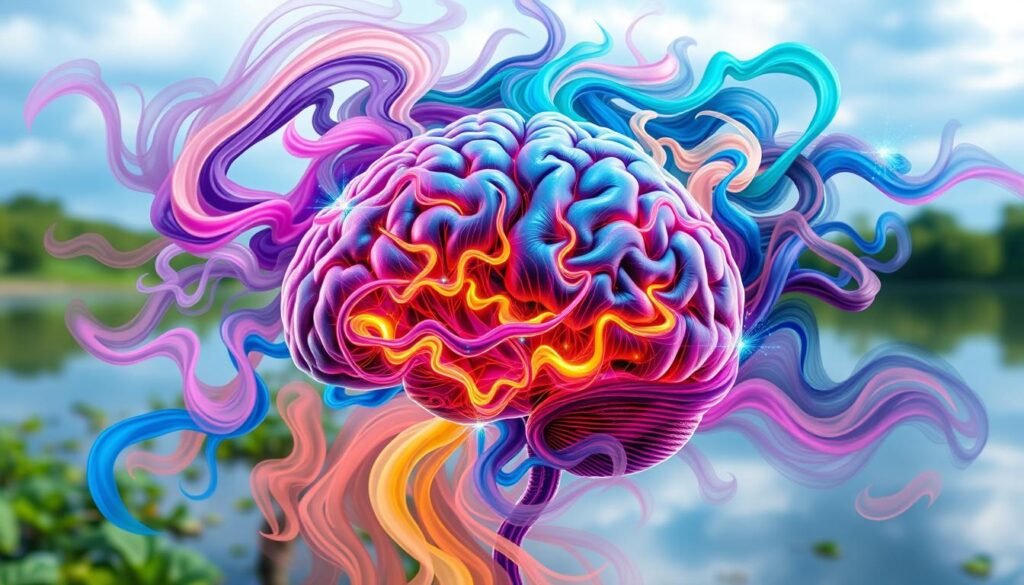
In the end, new steps forward in this field help us better understand and fight cognitive decline. Their findings aid in developing therapies that could greatly help those facing such challenges, improving their quality of life12.
Embracing a Life List Blueprint as a Personal Development Tool
Today’s world moves fast, making it tough to keep our brains healthy for the long haul. Yet, it’s very important. Using a life list blueprint as a personal development tool helps us hit our personal goals in an organized way. It also does wonders for our mental sharpness and emotional strength over time. This method is praised not only for organizing life goals but for boosting brain power and mental toughness, too.
Setting Goals for Long-Term Brain Health
Discussing goal setting guides with a life list blueprint means making plans that go beyond the usual. It pushes us to set goals that keep our brains working hard. This keeps our long-term brain health strong. Taking on challenging tasks and picking up new skills are big parts of this plan. The [In-MINDD] project shows these strategies can really lower the chance of dementia8.
Building a Dream Realization Strategy
To build a solid plan for making dreams happen, start with a life list blueprint. Identify what you really want, considering how it affects your brain’s health. A key part of this plan is living healthy. This means staying active and eating right, which keeps our minds sharp8. Plus, it’s about challenging our brains with intellectually stimulating activities. This approach helps our brains stay flexible and strong as we age.
There’s a clear link between tools like the life list blueprint and being sharper mentally. These strategies are vital not just for achieving big things in life. They also protect our brains from getting weaker. By doing this, we’re not just checking things off a list. We’re building strong, healthy minds for the future.
To sum up, adding a life list blueprint to our lives is essential for long-term brain health. It’s more than a personal development tool, it’s a key to keeping our minds young. It prepares us for a future where we remain mentally active, making the most of our latter years.
Neural Resilience Against Age-Related Decline: The Scientific Evidence
About 55 million people worldwide are hit by Alzheimer’s disease. This shows why it’s so vital to understand and boost neural resilience. Most Alzheimer’s cases happen randomly and appear late in life9. Studies show that staying mentally active through learning, hobbies, and challenging work lowers dementia risk9.
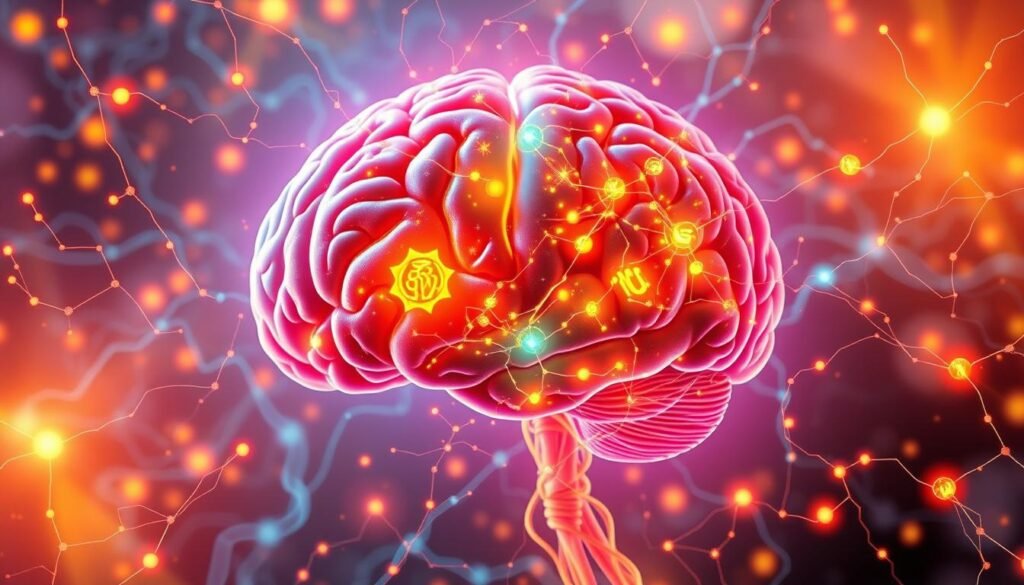
Recent studies highlight a link between cognitive reserve and Alzheimer’s visible effects. Some people astonishingly resist cognitive decline thanks to a ‘reserve’ mechanism. This helps them keep their mental functions sharp despite the disease getting worse9.
Research on older people has shown interesting findings. While they have more activity in early sensory brain areas, they struggle with complex thinking tasks. This change indicates a natural adjustment, where some brain areas work harder to make up for others. It’s a kind of neural resilience against cognitive decline due to aging10.
| Age Group | Sensory Region Activity | Cognitive Performance |
|---|---|---|
| Older Adults | Increased early activity in sensory regions | Reduced in fast-scale processing |
| Young Adults | Lower early activity compared to older adults | Higher performance in novel sequence recognition |
To grow this resilience, activities like music training are beneficial. They not only keep the mind sharp in older adults but also promote brain changes to counter neurodegenerative decline. These steps are crucial for building cognitive resilience and defending against the effects of aging10.
Looking into this research, it’s clear that building various neural resilience tactics can change how we age. We can move from fearing aging to having hope. By enriching our brains and lifestyles, we can aim to keep our minds strong and healthy.
Employing a Bucket List Planner for Cognitive Enrichment
As we get older, keeping our minds sharp is crucial. Using a bucket list planner isn’t just for fun. It’s a smart way to keep your brain healthy. Setting clear goals with this planner helps us chase new experiences and learn new things. This strengthens our brains.
Think of the bucket list planner as more than a tool. It’s a friend on your journey to stay mentally sharp. It helps us plot out various activities, like learning languages or traveling to new places. These activities challenge our brains in new ways, helping them to grow stronger.
A life goal planner keeps us involved in brain-boosting activities. Staying mentally active is key to keeping our minds in good shape. It helps keep our thinking skills strong for a longer time. Being physically and socially active can also reduce dementia risks. An active life is like a shield for our brains11.
“Embrace each item on your bucket list as more than a dream; see it as a step towards fortifying your mind against the inevitable effects of aging.”
A bucket list planner does more than fulfill personal dreams. It also protects our brains from aging.
| Activity | Benefits |
|---|---|
| Travel | Enhances cognitive flexibility and cultural awareness |
| Learning a new skill | Improves neural connectivity and problem-solving abilities |
| Social engagement | Reduces stress and risk of depression, fosters emotional regulation |
| Physical exercise | Supports brain health through enhanced circulation and neuron protection11 |
To really benefit from these activities, a bucket list planner guides us. It makes reaching our brain health goals realistic. Let this planner lead you to a life that’s both mentally active and richer. It sets the stage for healthier aging.
Resilience Mechanisms: Brain Maintenance and Brain Compensation
When we look at how our brains stay sharp as we get older, we find key resilience tools. These include brain maintenance, cognitive reserve, and brain compensation. Together, they keep our minds flexible and strong against age-related changes.
Comparing Brain Maintenance to Cognitive Reserve
Brain maintenance involves keeping and aiding neural paths to keep our thinking sharp. Unlike cognitive reserve, which deals with the brain’s ability to think differently when faced with challenges, maintenance aims to stop damage before it occurs. Studies show that the strength of our brain’s maintenance affects how well our minds age12. This highlights how important good brain health practices are for keeping our minds working well.
Cognitive reserve was first talked about in the late 60s while studying Alzheimer’s. It’s about how our brains can avoid showing signs of diseases, even when they’re there13. Introduced by Katzman et al. in 1988, it explains why some people’s minds age better than others13. It’s often linked to education and job experiences, with the idea being that these build stronger brain networks. These networks can take over when parts of the brain get damaged1213.
Understanding the Brain’s Compensation in the Wake of Pathology
Brain compensation is about how the brain changes its structure to deal with damage. It shows our brain’s remarkable ability to find new ways to work around problems12. Carol Barnes’ work in the 1980s highlighted this ability in older brains, paving the way for more research into brain self-defense13.
Together, brain maintenance, cognitive reserve, and compensation form a three-part defense against the mental wear and tear of aging. By learning more about these methods, we can better safeguard our brains. This helps us keep our mental edge as we grow older.
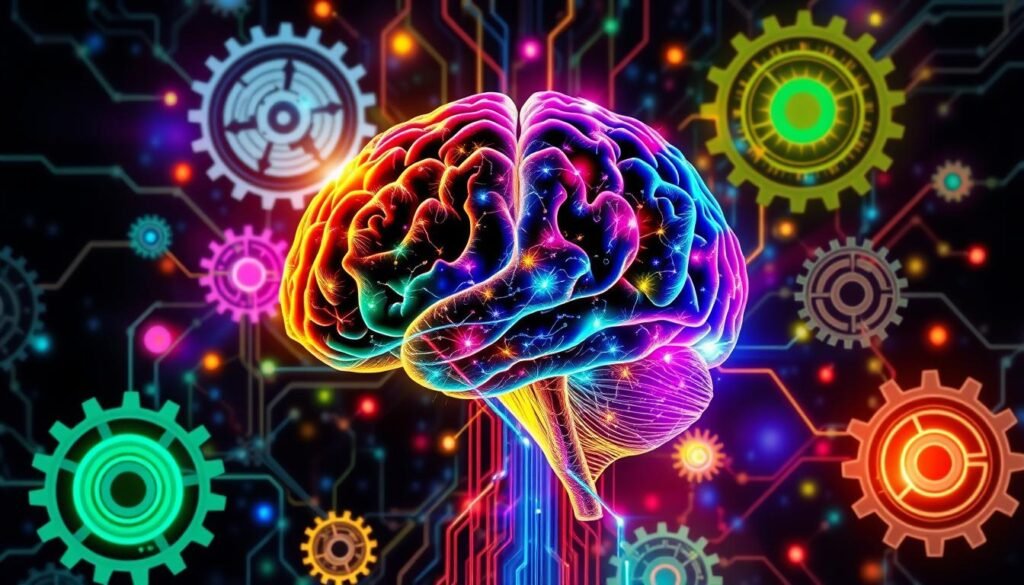
The Achievement Roadmap: Lifelong Activities that Protect the Brain
In my journey to protect the brain, I found a detailed plan. It’s not just about doing things for life. It also makes our minds stronger to fight off the problems that come with getting older. This method uses the newest science to make sure our steps are on solid ground.
Being mentally active is key for a healthy brain. Research shows that such activities boost our mental defenses and slow down mental decline14. Our plan includes reading, solving puzzles, and picking up new skills to protect our brains.
Having friends and a busy social life is very important for our brains. Studies say people who hang out more keep their minds sharp14. So, adding social fun to our list helps fight brain aging.

Being physically healthy is also major. Moving our bodies not just helps us feel better but is linked to a smarter brain14. Adding exercise to our everyday life is crucial for keeping our brains safe always.
Never stopping our learning is another big piece. Learning all the time, in school or out, makes our brains form new connections. These are key for staying mentally fit14. This part of our plan shows our brains can always grow if we keep learning.
| Activity | Benefits for Brain Protection |
|---|---|
| Intellectual Challenges | Increases cognitive reserve, delays cognitive impairments |
| Social Engagement | Maintains cognitive function, enhances mental health |
| Physical Exercise | Improves overall brain health, enhances neuroplasticity |
| Lifelong Learning | Strengthens neural connections, supports cognitive vitality |
Using a roadmap with many activities helps us grow and protects our brain. Adding these actions to my life has changed how I view aging and brain health. It’s turned it into an exciting trip, not a scary one.
Success Roadmap: Harnessing Neural Plasticity for Cognitive Preservation
The journey to keep our minds sharp is deeply rooted in the concept of neural plasticity. This is our brain’s skill to adapt, creating new connections that help us as we get older. I am dedicated to creating a guide that uses neural plasticity to fight off memory loss and keep our brains sharp.
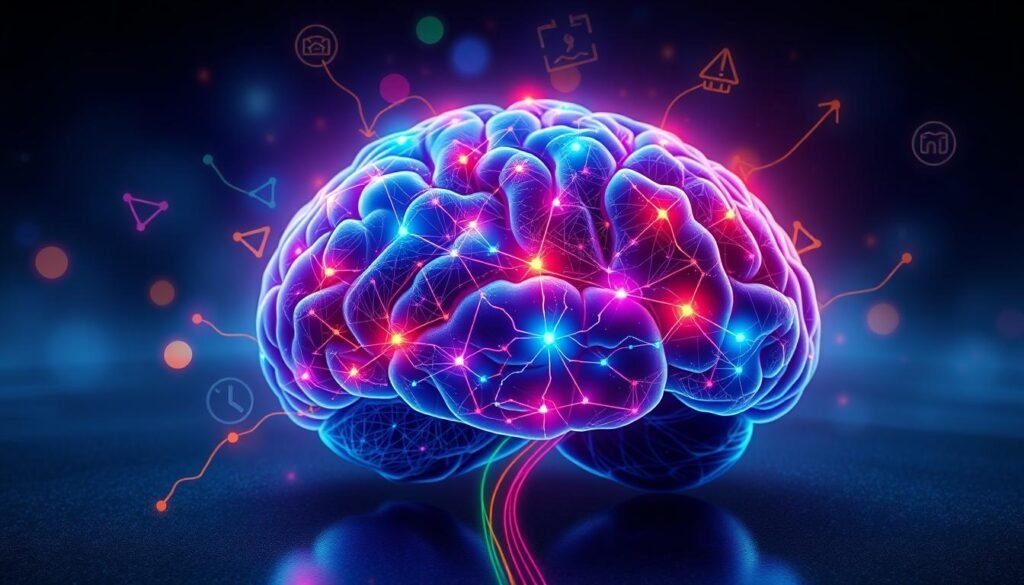
Recent studies highlight the power of neural plasticity. For instance, articles in Alzheimer’s Dementia show how staying mentally active slows brain aging. By frequently checking our mental sharpness with tools like the Montreal Cognitive Assessment, we can keep our brains fit15.
Adding challenging activities to our daily routine is key. These activities, like puzzles and strategic games, boost our brain’s flexibility. They also help protect against brain aging. Mobile apps for brain exercises are a modern way to keep our mind in shape15.
| Method | Impact on Neural Plasticity |
|---|---|
| Montreal Cognitive Assessment | Validates cognitive preservation |
| Digital Intervention Tools | Enhances cognitive engagement and neural connectivity |
| Problem-solving Activities | Stimulates neuroplasticity and cognitive resilience |
Also, understanding neural plasticity is crucial for our brain’s health. Having a positive outlook on brain training can make a big difference. Making a personal choice to always learn and stay mentally active strengthens our brain’s defenses.
Working together as a community is vital in caring for those getting older. Studies show that being active mentally makes neural plasticity work in our favor. This keeps our minds sharp for a longer time15.
In conclusion, keeping our minds young is closely tied to how well we apply neural plasticity. It’s important to focus on real actions based on science, and get everyone involved. Creating a world that values brain health will definitely help us maintain our cognitive abilities as we age.
Physical Activity and Cognitive Engagement: Allies for a Healthy Brain
Mixing physical activity with brain games is key for keeping our brains strong. These actions help the brain stay flexible. This flexibility boosts cognitive health in older adults.
Exercise as a Pillar of Brain Health
Staying active has a big effect on brain health. It can change the way our brains work and look. Studies show that elderly women who are more active have better brain function. Even just moving a bit more can help keep the mind sharp16.
Doing regular physical activities helps the brain perform better. This includes intense weekly workouts or lighter daily activities. People who are active tend to have better mental abilities than those who aren’t16.
Activities like Tai Chi and yoga are great too. They combine mental focus and movement to improve brain health17.
Cognitive Activities that Foster Resilience
Mental exercises play a big role in keeping the brain healthy. Doing things that challenge the mind protects against brain aging. Studies suggest that meditation and mindfulness can cause good changes in the brain. These changes help older people17.
These mental workouts help prevent memory loss. They are also good for dealing with stress and emotional health. They make our overall mental health better17.
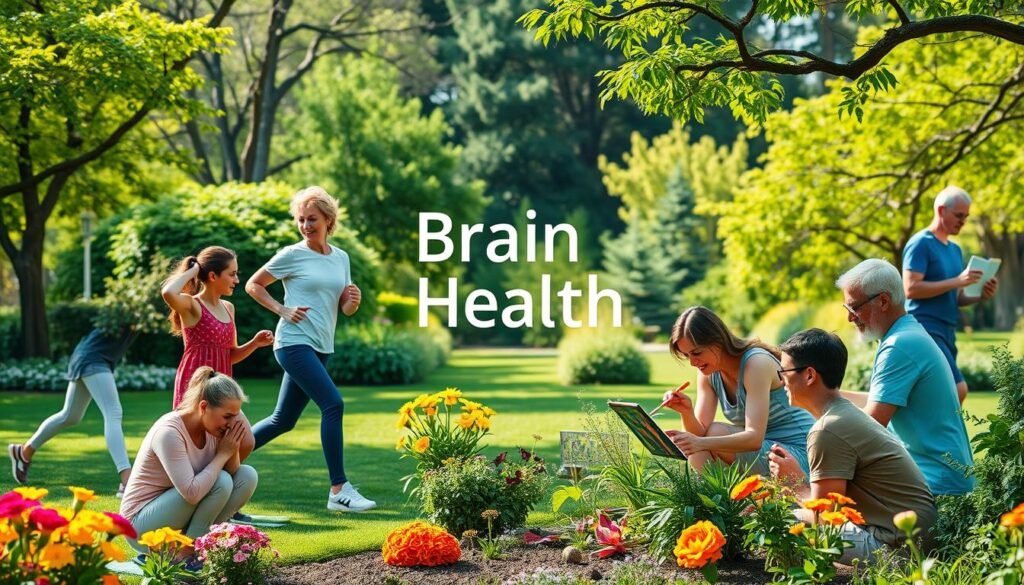
By mixing physical exercises with brain challenges, we can keep our mental abilities strong. This helps improve life quality as we get older. Being active in these ways can slow down, or even stop, diseases that affect the brain.
Discrepancy Between Alzheimer’s Pathology and Clinical Symptoms
In Alzheimer’s research, there’s an interesting gap. This gap is between the brain changes typical of Alzheimer’s and the symptoms people have. Even though some people’s brains show a lot of these changes, they might not show many symptoms.
Exploring the Contributions of Cognitive Resilience
Cognitive resilience plays a big role in why some people with lots of Alzheimer’s brain changes still think clearly. A study pointed out how certain brain cells help maintain thinking abilities. These cells do this by dealing with harmful proteins through antioxidant activities and choline metabolism18. This process creates a shield that helps keep the mind sharp, even when Alzheimer’s changes are present.
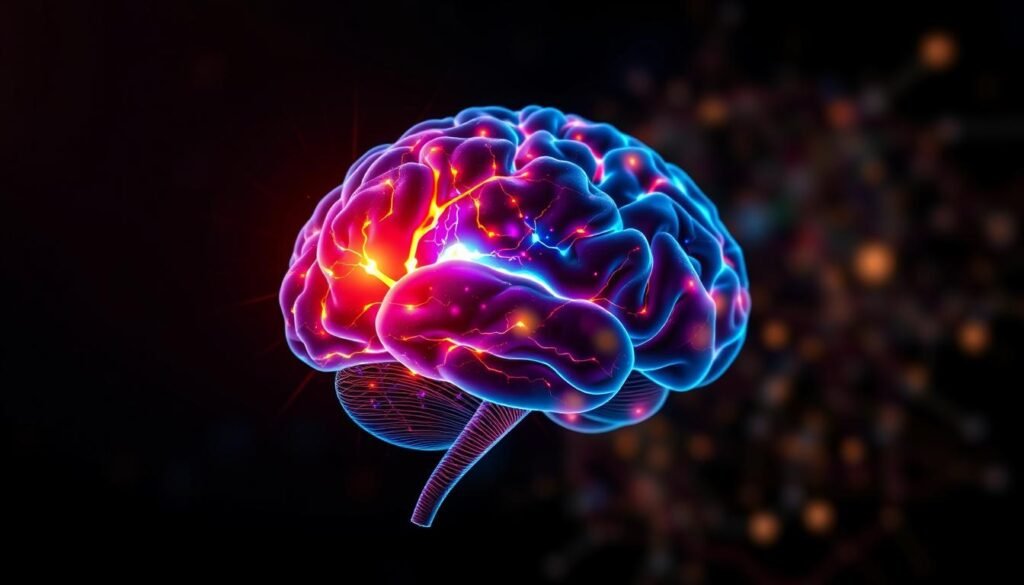
Also, some people’s minds stay healthy even when scans show a lot of amyloids, a key marker of Alzheimer’s19. Their secret could be healthy living, more education, and complex jobs. These factors make the brain stronger against Alzheimer’s changes. It shows how important it is to live in a way that protects our thinking as we age.
Profiles of Individuals with High Resistance to Dementia
Studies highlight people who resist dementia despite having markers like amyloid plaques. Some older folks, known as SuperAgers, stay mentally sharp as younger people, despite Alzheimer’s changes19. They have fewer tau protein deposits and are great at fighting off dementia’s usual progress. This could help us find new ways to treat Alzheimer’s.
Interestingly, some people show no mental decline even with many harmful tau proteins20. This suggests there are other ways the brain can avoid dementia symptoms. It’s a complex mix of genetics and lifestyle that helps some fight off dementia better than others.
Understanding Alzheimer’s and how some resist dementia can change public health approaches. It could lead us to focus on preventing the disease and finding treatments that boost brain strength. This could make life better for older people everywhere.
Implementing Effective Goal Setting Guides for Senior Brain Fitness
To improve senior brain fitness, it’s important to have goal setting guides. These should help with both physical health and thinking skills. Today, many older people may face memory problems. So, it’s key to have plans that meet their needs.

Statistics show that over 55 million people worldwide are dealing with dementia21. This number is expected to grow. So, we must act quickly to find ways to keep the mind sharp. Studies have shown that mixing physical, mental, and social activities can help protect the brain22.
- Exercising can greatly reduce the risk of Alzheimer’s and other kinds of dementia22.
- Doing puzzles and playing board games can make the mind sharper and lower dementia risks22.
- Being social can improve mood and thinking, which makes life better and longer22.
To use these facts, we should help older adults live in ways that keep their minds strong. Adding daily exercise, brain games, and time with friends to their daily routine can boost brain health.
It’s also good to follow cognitive health strategies that look at the big picture. Creating spaces and habits that challenge both mind and body can improve seniors’ living quality. It prepares them to age gracefully, with more strength and less fear.
Conclusion
In exploring how the brain stays strong against aging, I’ve found we need many methods to keep our minds healthy. The Barcelona Brain Health Initiative shows how important mental and physical activities are. Things like meditation can really slow brain aging23. Also, sticking to a Mediterranean diet helps protect against losing brain function. This diet seems to keep people’s minds sharper as they age23.
When talking about keeping the brain in good shape, it’s clear that being resilient and having good cognitive functions are closely linked. Having a strong purpose in life can help older adults avoid memory problems and dementia. This shows us how important it is to focus on personal growth to fight the effects of aging23. The study of Greek diets and aging will give us more info on how eating right affects our brain as we get older23.
I’ve learned that most serious memory problems are connected to different brain issues. These findings highlight how diseases can negatively affect our memory24. This knowledge shows that fighting against these diseases is critical. So, making a plan for reaching my goals isn’t just a dream. It’s a science-supported way to keep my brain strong and protect my cognitive abilities as I grow older2324.
FAQ
What is neural resilience and how does it relate to cognitive health?
Neural resilience is the brain’s power to stay sharp and handle the aging process. It keeps our mind strong against diseases like Alzheimer’s that come with old age.
How do genetic and environmental factors affect cognitive longevity?
Genes play a big role in our brain’s aging process. But, our lifestyle choices, like staying active and learning, matter just as much for keeping our minds young.
What distinguishes cognitive resistance from cognitive resilience?
Cognitive resistance is about stopping the brain from aging. Resilience is about dealing with these aging changes while keeping the mind working well.
Why is cognitive reserve important in the context of aging?
Cognitive reserve helps our brain deal with aging and disease. Learning and staying mentally active builds this reserve, keeping our brains healthy and lively.
What are residual methods and how do they measure resistance to cognitive decline?
Residual methods compare what we’d expect in brain aging to what actually happens. They show how well someone’s brain resists the decline through math.
How can a life list blueprint function as a personal development tool?
A life list blueprint is a plan for achieving your goals. It’s good for your brain, too, promoting activities that keep your mind engaged and healthy.
What evidence supports the effectiveness of neural resilience against age-related decline?
Studies show that people with high neural resilience age slower mentally. They’re also less likely to get dementia, proving how crucial resilience is.
How can a bucket list planner aid in cognitive enrichment?
A bucket list planner helps you chase goals that make you think and feel deeply. This strengthens your brain, fighting off age-related mental decline.
How do brain maintenance and brain compensation contribute to cognitive health?
Brain maintenance is about keeping the brain in good shape to avoid damage. When damage happens, brain compensation finds new ways to work around it. Both help our brain stay resilient.
What types of lifelong activities are included in an achievement roadmap for brain protection?
An achievement roadmap includes learning, socializing, and fun challenges. These activities boost your mental buffer, protecting your brain.
What is the success roadmap and how does it utilize neural plasticity?
The success roadmap uses the brain’s ability to change and adapt. It focuses on learning and tackling complex tasks to keep the brain flexible and strong.
Why are physical activity and cognitive engagement vital for brain health?
Exercise helps create new brain cells, boosting function. Keeping your brain busy maintains its flexibility and fights off mental aging.
Can someone have Alzheimer’s pathology without showing clinical symptoms?
Yes, some people’s brains can resist Alzheimer’s symptoms thanks to high cognitive resilience. This shows how important a stimulating life is in fighting dementia.
What factors should be considered when creating a goal setting guide for senior brain fitness?
For senior brain fitness, think about exercises, brain games, and hanging out with friends. All these keep the mind sharp and improving.
